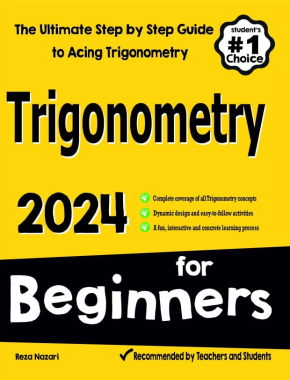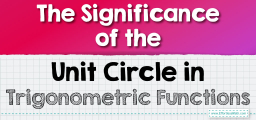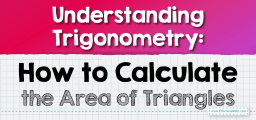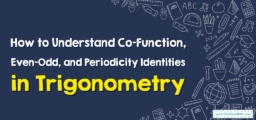How to Solve the Ambiguous Case (SSA) in Trigonometry
Trigonometry is a compelling field of mathematics, and one intriguing aspect is the Ambiguous Case (SSA). It is a circumstance that occurs while solving triangles using the laws of sines, which can sometimes lead to multiple solutions. This ambiguity in triangle solutions makes this case unique, and it is something we'll explore deeply in this article.

The Basics of Solving Triangles
In trigonometry, the primary objective is often to determine the dimensions and angles of a triangle when certain elements are known. A common scenario is when two sides and one non-included angle (SSA) are known, which leads to an ambiguous case. The SSA case is one of several methods to solve triangles, alongside other techniques such as side-side-side (SSS), side-angle-side (SAS), and angle-side-angle (ASA). Understanding these basics prepares you to tackle the intricacies of the ambiguous case.
The Absolute Best Book to Ace Trigonometry
Unraveling the Ambiguous Case (SSA)
The ambiguous case (SSA) arises when we know two sides and an angle is not included between these sides. There can be three distinct outcomes:
- No triangle solution
- One triangle solution
- Two triangle solutions
The number of solutions depends on the relative lengths of the sides and the size of the known angle. By applying the law of sines, we can dissect the mystery surrounding the SSA case.
Applying the Law of Sines in SSA Case
The law of sines asserts that the ratio of the length of a side of a triangle to the sine of its opposite angle is the same for all sides and angles in a given triangle.
In the SSA case, we apply this law to estimate the measure of the ambiguous angle. We might find one, two, or no possible solutions depending on the relative magnitudes of the angle’s sine and the side lengths.
Practical Examples of the Ambiguous Case
Let’s delve into some examples to grasp the ambiguous case (SSA) better.
Example 1: No Triangle Solution
Imagine we have a triangle with sides of lengths \(7\) units and \(3\) units, and the angle opposite the side measuring \(7\) units is \(30\) degrees. In this scenario, applying the law of sines results in no possible solution. The side length adjacent to the known angle (\(3\) units) is shorter than the height of the potential triangle, making the formation of a triangle impossible.
Example 2: One Triangle Solution
Consider a triangle with sides of \(7\) units and \(5\) units, and the angle opposite the \(7\) unit side is \(30\) degrees. In this case, the side adjacent to the known angle (\(5\) units) equals the triangle’s height, leading to only one triangle solution.
Example 3: Two Triangle Solutions
Let’s now examine a triangle with sides of \(7\) units and \(6\) units, with an angle of \(30\) degrees opposite the \(7\) unit side. The side adjacent to the known angle (\(6\) units) is longer than the triangle’s height but shorter than the side opposite the known angle, creating two possible triangles.
The Ambiguous Case in Real-World Applications
Trigonometry, including the ambiguous case (SSA), is not just confined to academics. It finds applications in architecture, astronomy, engineering, physics, and more. For instance, in architecture, the ambiguous case may be applied to calculate angles and distances during the design and construction of buildings.
Closing Thoughts on the Ambiguous Case (SSA)
Understanding the ambiguous case (SSA) in trigonometry requires patience and practice. This unique case, which may have no solution, one solution, or two solutions, introduces us to the fascinating complexity of mathematics. By mastering the SSA case, you’ll gain deeper insights into the fascinating world of trigonometry.
The Best Books to Ace the Trigonometry Test
Related to This Article
More math articles
- What are the Undefined Limits: Defining from Tables and Graphs
- Algebra Puzzle – Challenge 45
- 7th Grade OSTP Math Worksheets: FREE & Printable
- Full-Length 8th Grade FSA Math Practice Test
- FREE 7th Grade Common Core Math Practice Test
- 8th Grade NYSE Math Worksheets: FREE & Printable
- How to Solve Negative Exponents and Negative Bases? (+FREE Worksheet!)
- 6th Grade IAR Math Practice Test Questions
- How to Find the Area and Circumference of Circles? (+FREE Worksheet!)
- SIFT Math Formulas














What people say about "How to Solve the Ambiguous Case (SSA) in Trigonometry - Effortless Math: We Help Students Learn to LOVE Mathematics"?
No one replied yet.